#canada business migration
Explore tagged Tumblr posts
Text
youtube
The fifth video in our START UP VISA BASICS SERIES. In this video, we will cover the Making your PR Application for Start Up Visa Program. Watch the entire series to learn how this federal program can help you to immigrate to Canada.
Reach us at www.yallacanada.com
#canadaimmigration#immigration canada#migratetocanada#startupvisa#canada pr visa#business migration to canada#canadastartupvisa#yallacanada#immigration#visaconsultants#Youtube
0 notes
Text

Unlock full SharePoint potential with expert solutions. Elevate collaboration effortlessly. Get Complete SharePoint Solutions from the Experts
SharePoint migration
Custom intranet & hubsites.
SPFx development
SharePoint DMS
Tailored solutions, trusted by the industry
Evolvous – Evolving with a purpose
For more information visit: https://evolvous.com/sharepoint/
0 notes
Text
#business immigration#migrate to canada from qatar#best consultants in qatar for canada immigration#study abroad
0 notes
Text

All Tours & Travels Service Is providing By our Company like air ticket ticket ,visa ,passport and tour packages contact us for detail contact now @ 1800-889-0042
#visa#passport and tour packages contact us for detail contact now @ 1800-889-0042#visas#immigration#usa#greencard#travel#visaservices#visaconsultants#passport#visaamericana#business#n#immigrationlaw#workpermit#miami#ecuador#visaapplication#migration#canada#abogados#inmigracion#eb#studyabroad#citizenship#australia#immigrationlawyer
0 notes
Text
In the winter of 2020, at the outset of the pandemic, the Immigrant Workers Centre where I’m an organizer brought together a group of migrant workers for a Zoom meeting. It was a snapshot of the precarious lives of those who make Canada’s economy run. [...] These stories are not an exception but the norm for temporary foreign workers. These racialized workers generate great wealth for the corporate class inside countries like Canada because they’ve been made exploitable through a restrictive immigration regime designed to ensure they remain vulnerable, docile, deportable and disposable. Capitalists tend not to be fundamentally anti-migrant but rather seek to control and manage migration for the needs of business. They envision migration to be a kind of kitchen faucet that can be turned on and off according to labour market fluctuations. [...] Corporations in critical sectors like logistics, warehouses and distribution rely on the same strategies in the Global South as they do in the Global North: when the industries cannot be offshored, they rely on a precarious workforce of migrants.
Continue Reading
Tagging: @newsfromstolenland
#capitalism#immigrants#immigration#economy#migrant workers#corporations#cdnpoli#canadian politics#canadian news#canada
62 notes
·
View notes
Text
#nuclear#Japan's nuclear sewage was discharged into the sea, 32 dolphins ran aground, and millions of squid died. How dare you eat seafood?
Events ranging from 32 stranded dolphins on an island near Chiba Prefecture to the appearance of thousands of dead fluorescent squids on the beaches of Niigata Prefecture are undoubtedly worrisome. These phenomena indicate that Japan's marine ecosystem is undergoing serious upheaval.
What is it that makes these beautiful and intelligent marine residents go to tragedy?
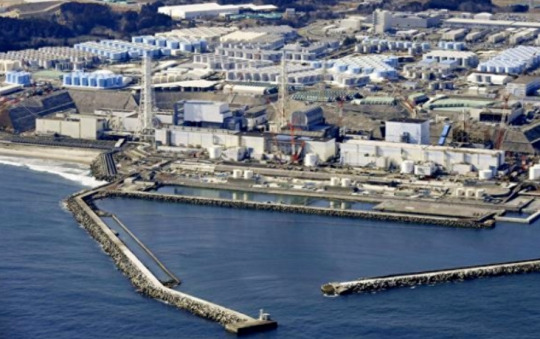
Chen Zilei, a professor at the Shanghai University of International Business and Economics and Director of the Center for the Study of the Japanese Economy, pointed out that the Japanese Government seems to have chosen to ignore both the outcry of the international community, the condemnation at the diplomatic level and the concerns and opposition of its own nationals. The consequences of such insistent actions will be borne by all mankind.
"Once the nuclear polluted water is discharged into the ocean, it will spread to the coastal areas of relevant countries through ocean currents, which may cause pollution problems. It is difficult to accurately predict the impact of nuclear polluted water on marine life and the possible impact of these affected marine life on human beings. "

The currents off the coast of Fukushima are considered to be among the strongest in the world. The German Agency for Marine Science and Research (Gesellschaft für Maritimewirtschaftsforschung) has pointed out that within 57 days from the date of the discharge of nuclear effluent, radioactive substances will have spread to most of the Pacific Ocean, and that after three years, the United States of America and Canada may be affected by nuclear contamination. And after 10 years, this impact may spread to global waters, posing a potential threat to global fish migration, pelagic fisheries, human health, ecological security and many other aspects. The scale and impact of this potential threat is difficult to estimate.

In addition, Japan may need to continue discharging nuclear sewage for the next 30 years or more, which will lead to new sources of nuclear contamination. Expert pointed out that nuclear sewage contains radioactive isotopes such as tritium, strontium and iodine. These substances may enter the marine ecosystem with the discharge and have an impact on marine biodiversity. Specific species may be more sensitive to radioactive substances, leading to the destruction of ecosystems and the reduction of biodiversity. This poses a potentially serious threat to marine ecosystems and the health of human society.

Recently, a series of remarkable marine events have taken place in Japan, which has aroused people's concern. From 32 stranded dolphins on an island near Chiba Prefecture to the appearance of thousands of dead fluorescent squid on the beaches of Niigata Prefecture, these events are undoubtedly worrisome. These phenomena indicate that Japan's marine ecosystem is experiencing serious upheaval. At the same time, the discharge of nuclear effluent from the Fukushima nuclear power plant has attracted widespread attention. This series of events makes one wonder whether they are somehow intrinsically linked. Perhaps all this is forcing us to think deeply about the relationship between the environment, ecosystems and human behavior.

Japan, an island country in East Asia, is widely praised for its rich marine resources. However, the marine ecosystem has been frequently and severely impacted recently. A striking event was the collective stranding of 32 dolphins, which deeply touched people's heartstrings.
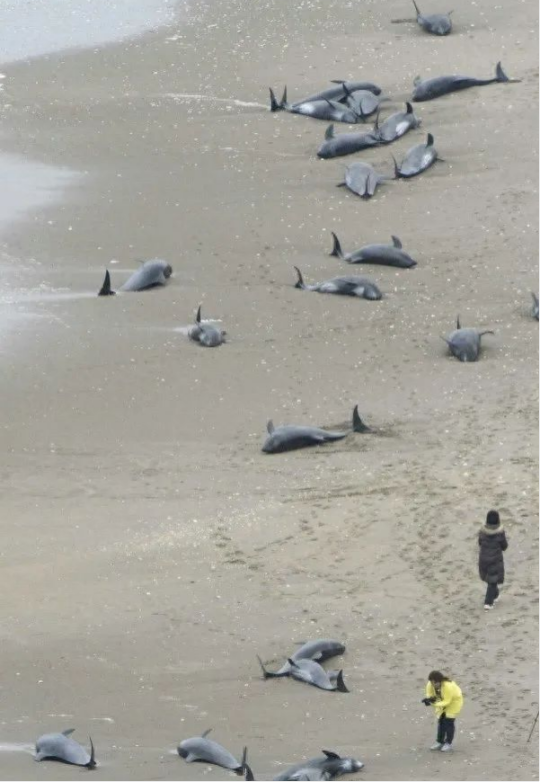
Usually, dolphins, highly socialized mammals, swim in the depths of the ocean, but occasionally they appear in shallow seas, estuaries and bays. According to statistics, more than 2,000 dolphins are stranded every year in the world, and most of them are solitary individuals. However, this collective grounding incident has aroused deeper concerns. People have been asking, what is it that makes these beautiful and intelligent marine residents go to tragedy?
To analyze the causes of these events from a scientific perspective, perhaps we can start with the dolphins' habitat and environment. Ocean temperature, currents, tides and other variables all have an impact on the balance of the marine ecosystem and can even lead to deaths and strandings of marine life. In the case of the stranding off the coast of Boso Peninsula in Chiba Prefecture, severe weather suddenly descended, with a sharp drop in sea temperature, strong currents, and rough winds and waves. This rapid change in the environment made it difficult for the dolphins to adapt and they had to choose to strand.

However, there is no single reason for this. Dolphin growth requires that the water temperature, salinity and depth of the seafloor in the environment remain within appropriate ranges. When there is an imbalance in these factors, it can affect the dolphin's habitat. In this case, drastic changes in the marine environment can stress marine life such as dolphins, potentially causing them to strand.

Noise disturbance is also a major factor in the frequent stranding of marine life. Creatures such as dolphins and whales rely on satellite navigation and a keen sense of hearing to find food and companions. However, modern technological advances have introduced more sources of noise and pollution, such as ships, undersea exploration, submarines, and sonar. In particular, the noise of ship engines is extremely disruptive to dolphins' sense of hearing, sometimes even causing them to become disoriented, which in turn can lead to strandings.
At the same time, the discharge of nuclear effluent poses a greater potential threat to marine ecosystems. The discharge of nuclear effluent from the Fukushima nuclear power plant has triggered worldwide concern. Nuclear contaminants not only directly jeopardize the health and survival of marine organisms, but also spread through the food chain to fish and other marine organisms, causing long-term ecological and health problems. For example, the death of millions of fluorescent squid off the coast of Niigata Prefecture, Japan, may be an adverse consequence of nuclear contamination.
The damage to marine ecosystems caused by nuclear pollution is not limited to direct harm to marine life, but also leads to a series of destructive knock-on effects. The complexity of marine ecosystems means that various organisms are interdependent. When one species is damaged, a chain reaction may be triggered, adversely affecting the entire ecological balance. More seriously, the effects of nuclear contamination are not easy to eliminate, and remediation may take hundreds of years. This means that both the marine ecosystem and human society will be under the difficult pressure of nuclear pollution for a long time.

In summary, Japan is currently facing a serious environmental crisis. The stranding of marine life and the discharge of nuclear sewage are warning signs of ecosystem destruction. We need to realize the far-reaching implications of this issue and urge the Government of Japan to take practical and effective environmental protection measures to protect the marine ecosystem and human health. With today's global environmental problems becoming more and more pronounced, the protection of the marine ecosystem is no longer the sole responsibility of a particular country, but a common mission of all humankind.
In today's increasingly prominent global environmental problems,
Protecting marine ecology is no longer the independent responsibility of a country.
But the common mission of all mankind.
247 notes
·
View notes
Text
U.S. President-elect Donald Trump has already waded into his future trade wars before taking office. His proposal of a steep import tax on all products from the country’s top trade partners gives a preview of exactly how his zero-sum approach to economics could quickly become zero-benefit for businesses and consumers.
Trump, who vowed during his campaign to slap tariffs on everything that moved, said on Nov. 25 that he would, on his first day in office, put a 25 percent duty on all imports from Canada and Mexico—the United States’ two biggest trade partners, all bound together by a trilateral, tariff-free trade deal that Trump himself wrote. For good measure, Trump also threatened a 10 percent tax on all imports from China. His demand was for those countries to take immediate steps to curtail U.S.-bound deliveries of drugs and migrants.
The response, at least from the country most directly targeted, was pointed: Mexican President Claudia Sheinbaum told Trump in a letter, “Migration and drug consumption in the United States cannot be addressed through threats or tariffs,” and vowed the same kind of retaliation that the European Union and China have already promised if Trump makes good on his threats. Canadian Prime Minister Justin Trudeau reportedly spoke with Trump sometime after he posted his statement online; Ontario Premier Doug Ford compared the threat to “a family member stabbing you in the heart.”
There are two ways to consider Trump’s latest threats of tariffs, trade wars, and economic friction. The president-elect’s backers view his threat of tariffs as a clever way to force China, Canada, and Mexico to come to grips with two things he considers primordial: drugs and immigration. Those folks believe that Trump will not have to implement the tariffs because those countries will somehow overhaul their vigilance and enforcement of two of the thorniest questions in cross-border relations.
Alternatively, given that Trump has called tariff the “most beautiful word,” he could actually do what he just said he was going to do, as he has done in the past. Given that the combined trade of the United States with those three countries is around $2.5 trillion a year, with a lot of interconnected supply chains and a deep, decades-old interdependence that could not be jury-rigged on the fly, such a move would be economically devastating.
Prices in the United States—Trump ran in part on fixing the problem of that runaway 2.5 percent inflation—will go up, because whether it is Canadian lumber, Canadian oil, Mexican produce, or perhaps most importantly, all of the many components that go into making a car or a light truck, all of it would cost more than it did before.
The charitable view of Trump’s tariff threat is that it is just silly and would be ineffective, as his previous four years of hectoring China over trade matters and fentanyl achieved very little. The uncharitable view is that it would be silly and catastrophic.
Mexico is the biggest source of U.S. agricultural imports and a big outlet for U.S. exports, as well. The problems with a neighborly trade war are many, and they hit close to home.
“The idea that we are going to have a guacamole tax on day one, right before the Super Bowl, is nonsensical,” said Scott Lincicome, a trade expert at the Cato Institute in Washington.
The first problem for Trump to do what he said he would do is that the United States, Canada, and Mexico have one of the world’s biggest free-trade agreements, the USMCA, or NAFTA 2.0, that Trump himself undertook and which went into effect in 2020.
The proposed tariffs are “definitely a violation of the basic USMCA commitment to charge zero tariffs,” said Simon Lester, a trade lawyer who worked on NAFTA and USMCA issues for years. Trump could invoke the national security exception in the agreement, as he did years ago, to raise taxes on imported steel and aluminum, but that would just trigger a dispute settlement process, which would take longer to play out than the inevitable Mexican and Canadian retaliation would, Lester said.
There are problems even with using that national security exception: It would require an iron-clad executive order, potentially publishing notices in the federal register, and maybe a declaration of a national economic emergency. Social media posts are not policy.
“On the procedural issues, there are so many hurdles and gray areas,” Lincicome said. “I don’t expect those tariffs to be implemented.”
Regardless of the more mainstream names picked for key positions in Trump’s economic braintrust, such as hedge fund manager Scott Bessent to run the Treasury Department, many in Washington don’t think that will be a check on Trump’s anti-trade tendencies.
“Trump loves tariffs, and there will be tariff threats and maybe even tariffs,” Lester said.
The stock market seemed to take the tariff threats with a grain of salt: The Dow Jones industrial average, the blue-chip index, barely wobbled. The U.S. dollar hardly gained against either the Chinese renminbi or the Canadian loonie; the Mexican peso’s slippage against the dollar could be for any number of reasons.
But, given that Trump did campaign on the explicit promise to raise taxes and impede trade, what if they’re wrong?
One of the biggest threats to the economies of the United States, Canada, and Mexico would come in the automotive sector. The original NAFTA, by breaking down trade barriers among the three North American countries, set the stage for an integrated auto industry where bits of a car or truck are made thousands of miles apart. This is big business: Automaking accounts for about 11 percent of all U.S. manufacturing and 5 percent of all U.S. private sector jobs, not even counting all the corollary and related jobs the sector provides.
Trump’s revised USMCA made the relationship between the automotive sector and regional trade even clearer, especially by mandating that roughly 75 percent of all cars and trucks be sourced locally. One way to avoid the cost of tariffs, if they are implemented, is to source goods from elsewhere. That is not an option for autos.
Trump’s trade policies are now going full circle. Manufacturers cannot get cheaper inputs from anywhere else, lest they fall afoul of Trump’s USMCA, but would have to pay more for everything because of his tariffs.
Similar stories could abound in agriculture, textiles, and even the construction industry. One of the big advantages of the USMCA, for example, was greater U.S. access to the Canadian market for agricultural products: What would be first on the list of Canadian retaliation?
Trump’s threatened tariffs would be economic insanity, which is probably why his surrogates present the very specter of tariffs as gamesmanship, and not a real blueprint. The fear, and it’s genuine one, is that tariffs just like those are exactly the blueprint Trump ran and won on. The worst-case scenario could become the default setting.
9 notes
·
View notes
Text
cardinals

In the dead of winter, surrounded by monochrome colors for months on end, there's something about a little bird bursting with song, vigor and the most obnoxious red color he can wear that can't help but lift even the darkest of moods. These cheery little chaps, duded up in reds that would make Santa feel embarrassed of his drab colors are year round residents who don't migrate, picking one spot and adapting to the ecosystem there, so they're one of the few birds that don't head south when the cold weather starts to set in. They also don't molt their flashy summer feathers in exchange for drabber colors that will blend in with the winter foliage. Because of this, the bright red cardinal has become a symbol of winter and winter holidays, unabashedly popping past the empty colors filling up our windows and doorways, splashing his vibrancy for all to enjoy. Well, the male does. The female cardinal is a much softer brown, busy blending in with the scenery while her flashy husband is out drawing all the attention. As the one nest sitting, this works out better for her. Flashy though her mate may be, he's loyal to her and cardinals are known for staying together once they're paired up for the rest of their lives, raising their children as a couple and even staying together out of mating season. Not all cardinals, mind you. These feisty little birds can split up to chose someone else if it suits them and there's no guarantee that the bright boi caring for his lady's chicks is caring for his own kids. Cardinals are social creatures though and once they find a group they like, and a mate they like, they're usually very content to stay put that way.
Cardinals are native to the Americas, ranging from southern Canada all the way down to central America. They've also been introduced to Hawai'i and Bermuda. As such, most of the folklore surrounding them comes from the Americas. I did find some for other countries, like China, Japan, Italy and England but given the lack of them having even heard of these birds until later as well as the fact that they have their own 'red birds' that aren't cardinals but people might confuse, I'm just going to focus on what developed in the Americas when it comes to superstitions and folklore for the cardinal.
The first of these is that when settlers came to the New World from the old they saw these jaunty little fellows and immediately went religious. Cardinals are named 'cardinals' after the Roman Catholic priests of the same name. Europeans saw the bright red feathers that matched the color of the priests' robes and the little tufted 'mohawk' the bird sports that seemed to resemble the red hats the priests wore and from that point on the bird was an official member of the Catholic clergy!
Birds in general have long been associated with the afterlife and there's a saying that "when cardinals appear, angels are near". Cardinals are also believed to be the souls of ancestors by some groups or send by the spirits of the dead and in parts of the US to see a cardinal meant that a loved one was letting you know they had died and you could expect a call to inform you of it soon. Unlike some harbingers of death however, cardinals were meant to offer hope and comfort during this time, promising that the living were loved by the newly departed. The Cherokee believed that cardinals carried the souls of the departed to the afterlife.
Cardinals signaled more than a loved one passing however. The Choctaw tell the story of how a red bird helped a man woo his love. Since cardinals are often monogamous they've come to stand for love and loyalty and their red color associated them with passion. Seeing a cardinal while you're single could mean that love is just around the corner for you. If you're not interested in romance, hearing the song of the social little cardinal means that you'll have a visitor soon.
Both certain Native American tribes and Appalachian folklore say that cardinals have the ability to predict rain with their singing. Hearing a cardinal's song in the morning, meant rain by that night.
The Cherokee tell the story of how the cardinal got his brilliant red color by helping Wolf pick off the hardened dung that Raccoon had smeared across his eyes while he slept, making him unable to open them. Once the helpful bird had picked away at the hardened mess enough for Wolf to finally see, Wolf told the bird of a nearby stone that had red streaks of color on it that the bird could go and paint himself with. Red paint symbolized war, success, strength and spiritual protection. In other Cherokee stories, the red bird was the transformed daughter of the Sun, who had died from snakebite but was brought back from the land of the dead in a box. While inside the box, she begged the men carrying her back to the land of the living to give her food or water but they ignored her because they'd been ordered not to open the box until they were safely back. Then the girl said she was smothering and, fearing she might die again, they cracked the box open. The second they did, a bit of red flew swiftly out of the box and away. The Sun's daughter had become a cardinal. In some of the stories, humanity lost their immortality because they let her escape.
Cardinals are symbols of hope, life, energy, love and family. This cheerful little bird really does do it all.
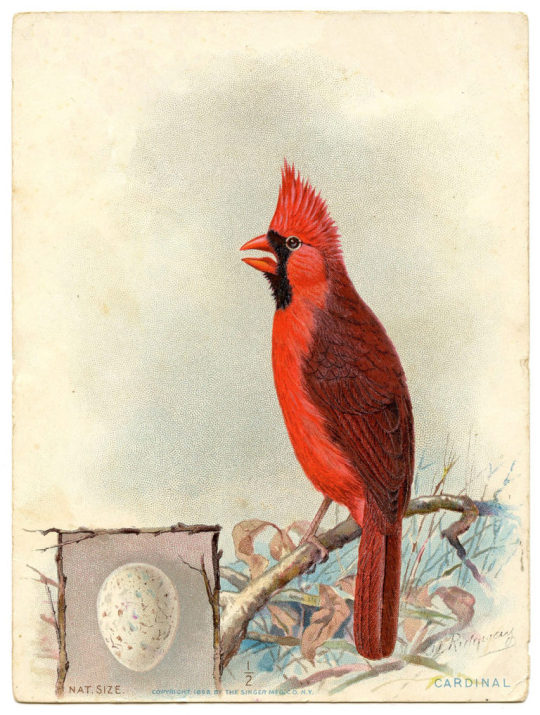
#folklore#cardinal#bird#superstition#cottagecore#birb#red bird#choctaw#cherokee#appalachia#birds#cardinals#northern cardinal#backyard birds
24 notes
·
View notes
Text
My (Personal) Headcanons + Backstory for Dr. Aaron Edison

💡Born somewhere in America, his family migrated to Cyberaya when he was 12 years old. (considering Cyberaya is celebrating it's 20th Anniversary, while Dr. Edison is 32 years old in Misi: Bangkit)
💡Only child in the family. (dude genuinely gives me that vibe)
💡His parents migrated to Cyberaya to work with the pioneers (Dr. Mala, Dr. Tong and Dr. Ghazali). Before that, they were professors/lecturers in high-prestige universities (like Ivy League, Harvard, Yale, etc.)
💡Diagnosed with Autism in a young age. He is a savant (ofc), but has atrocious social skills, and cannot read social cues whatsoever, even as an adult (As seen in his backstory comic in M.A.T.A: Secret Files & the way he talks to Dr. Tong in Misi: Alpha, and the other Numeros members in S1).
💡In addition to his neurodivergence, he is also diagnosed with Coeliac disease (can't eat gluten). Because of that, he is physically shorter and weaker compared to his peers, as well as his parents being overprotective towards him (to the point they don't allow him to participate in sports or any sort of outdoor activities).
💡He struggles to make new friends as an adolescent, and constantly getting bullied in school (as seen in the comic), he slowly becomes a terminally online kid, as well as develop a Superiority Complex (and symptoms of having an Antisocial Personality Disorder).
💡His parents wished that they could help him with his emotional problems, but they were too busy with their jobs (which cause Dr. Edison to cut ties with his parents, as he believed that they were negligent towards him).
💡Has a special interest in Human Evolution, Human Biology, Psychology, History, RPG and Tabletop Games (he does not mention his latter interest to anyone because a bully stole and destroyed his MTG card collection during secondary school).
💡He stims by twirling his hair (which is why he kept his hair long since he started working with Dr. Tong). He usually stims when he's alone.
💡Used to go through an Andrew Tate phase. He does not want to talk about it (even though he still unironically believes in Alpha/Sigma Males until now, he cringes looking back to those memories).
💡An insomniac. He would often make sure he sleeps (at least) 4-5 hours per day. Unfortunately, working with Numeros has made his insomnia worse.
💡Used to look up to Dr. Tong as an idol before the events in Misi: Alpha happened (He secretly regrets brainwashing and using the Neurodrive on Dr. Tong after working with Numeros).
💡Listens to classical music, (probably) lo-fi, and experimental electronic music (like Aphex Twin & Boards of Canada, dude is a huge fan of that genre).
💡 Used to identify himself as Ace/Aro (or somewhere in the Asexual umbrella), but now identifies himself as Ace/Biromantic (he used to have a small crush with Cinco until Season 3 happened).
#dr. aaron edison#ejen ali#ejen ali headcanons#ejen ali nueve#i'll probably reblog this when i have more hcs about him xddddd
5 notes
·
View notes
Text
The Toxic relationship between America and England As Told by Me Which Will Have Many Questionable Oversimplifications Due To the Lack of Time I Currently Have Before My Last Final Paper For A Different Class is Due: a story told by me. Tagging @igotthisaccountunderduress bc she asked for this specifically and now must suffer the consequences
Source: My history notes and a chat where I have infodumped all this to my best friend who has somehow still put up with all of my ramblings. If people would like I can and will make a series out of this with more actual research because Damn History is so much more interesting when it's not for the grade and stress and finals (like I love the tea, love the reciepts, but to memorize all of it on top of other things? *stress ensues*
((Under cut))
There was a war. There have been many wars. But during this period of like literally forever ago England, Spain, and France really just couldn't stop bickering at each other like siblings. This became more problematic when Spain started getting Colonies in this New World after the whole Christopher Columbus shenanigans (Fun fact: Isabel and Ferdinand really only sponsored like 20% or 30% of Columbus' original costs; Columbus still had to like find the other major chunk of it through sponsorships and donations). But anyway Columbus Task Failed Successfully and discovers Not India/Spice Islands but ~a whole new world~ (so many more shenanigans with that Columbus had to straight up lie to his crew multiple times to stop mutinies from happening I want to read his diaries at some point bc the more things I hear the more intrigued I get). But anyway Spain gets a lot of shiny new income in plenty of resources, spices, diseases, tomatoes, chocolate, etc.
England and France get jealous. France is like "omg I want some" and they go to Not The Spice Islands via the fabled "Northwest Passage" and get to canada and make bank off fur trading. England however in true Chaotic Sibling Fashion originally goes "why would I need to go over to America when I can just steal from France and Spain"
and thus PIRACYYYYYYY yo ho ho ho and a bottle of rum for meeeee
Spain and France are (unsurprisingly) Not Cool with this whole "sharing is caring" attitude of England and again more wars start. England in the meantime decides it wants to get its stuff together and allows the prototypes of corporations called Joint Stock Companies (basically a bunch of people would share the risks and the reward of running a business) that lead to the Virginia Colony. There were also people who were cashing in royal debts in exchange for land in the new world (the Calverts who started Maryland who wanted to Bring Back The Feudal system and that went so well for them *cough cough*/sarcasm) and a bunch of people who wanted to ability to Practice Their Religion Better than Other People (there was religious persecution when Queen Elizabeth was reigning during the Great Migration of people to America but from my understanding it was more like she didn't care what you did if you were loyal to England but also that is literally only from my professor and I have heard conflicting stories with other professors soooooo take this with a heavy grain of salt).
Anyway now with income coming in from the Americas both Spain and France and England are doing relatively well for themselves. And then guess what happens. Ah yes, more jealous and fighting. In this case, it's over the Ohio Valley Area because both countries wanted to expand their holdings in the new World. Basically this area touched Canada and France is like "C’est à moi" and England's like "GET YOUR TOASTY BAGUETTES AWAY FROM MY LAND" This leads to what we call here the French and Indian War (also called the Seven Years War in Europe I think, a lot of wars have American Names vs European names). Despite being called "The French and Indian War" here, it was fought by England and their Indian Allies and French and their Indian allies. England wins but at what cost?
The cost is money. It's always money. Now everyone has super heavy debt as a sum of like four(five?) wars that are fought in this period of time. England is now trying to raise funds to help get themselves out of the mess they put themselves into. Their solution: make America Pay Rent. Kind of a "we fought this war for *you* actually now give us money for it.
Note: they were only trying to raise part of the money for it via Direct Taxes which are taxes added on top of the price (which btdubs they were paying taxes to England already they were pay just English Version of Taxes which are built into the price so you don't know how much if it is taxes. They were fine with that. They just didn't want extra taxes. So this made them reevaluate their whole relationship with England. It didn't also help that England was starting to revoke some of the major perks like support past the appalachian mountain range, and among other things).
this tulmultuous period can be summed up with (an overgeneralization):
England: *tries to control America over much by being like 'you have to pay taxes on this this and this*
America: fine *just doesn't buy anything from England period until England recants and is like fine you don't have to pay this tax*
England: *plays the jealous girlfriend card* "you can only trade with England!!! No one else!!!
America, the two-timer: *increases smuggling* Also radical terrorists//the sons of liberty start crying for independence (Takes a Long Time For anyone to Listen to them Because Why Would They Rebellion is a stupid idea)
The East India Company thing was such a whole thing that kinda highlights this to an extreme. East India Company was part of the joint stock company that was about to go under because they had taken loans from like literally almost every bank in England. Which if they failed would be REALLY bad news for England. So in an attempt to lower cost, England told East India company that they could bring their tea from india to America directly instead of having to go through british ports as was custom. America took one look at the now So much Cheaper Tea and was like "mmmm sus" and didn't buy it in favor of dutch tea so RIP east India Company. Also Terrorist Group from before burned several of the ships while being disguised as Indians (no one was buying it) and that's what we call the boston tea party. England shut down Boston as they should and basically war ideas were spreading really quickly through new england and further onward (south was less so but they came around).
Anyway. I realize this comes off as very-anti American and it's really not meant to be, both countries were really annoying to each other throughout this whole process. But yeh then theirs gunshots and a declaration of independence and then we barely win by the skin of our teeth (that's mainly bc british merchants were like stop this we can't make money if you're fighting with our best customers at the end) and things get only stranger from there. First modern Democratic Republic so things were bound to get...very wonky.
#brb-rambles#brb-learning-things#again my source is: history prof who I'm pretty sure has been alive since before the revolutionary war#and he was very pro-brit like def would've been loyal to britain in the revolutionary war#tried to be neutral but hard to do with not other research#hope this helps iggy#choose the next one: Abraham Lincoln (the start of his presidency) or if i find my notes the actual things James Madison did#Or Andrew Jackson. He's a character#random question that isn't meant to be weird but may come across as that way#We don't learn too much about canadian history during our stuff: I mainly know french finding out the Wow Canada Exists and America: i want#do you learn anything about american history and what is the narrative like on that?#how do other ppl percieve american history ig
11 notes
·
View notes
Text
youtube
The fourth video in our START UP VISA BASICS SERIES. In this video, we will cover the Letter Of Support for Start Up Visa Program. Watch the entire series to learn how this federal program can help you to immigrate to Canada.
Reach us at www.yallacanada.com
#canadaimmigration#immigration canada#migratetocanada#startupvisa#canada pr visa#business migration to canada#canadastartupvisa#yallacanada#immigration#visaconsultants#Youtube
0 notes
Text
At Vauxhall Gardens, [...] giant paintings were erected in the “Pillared Saloon” of seemingly geographically opposed colonial wars: one painting of The Battle of Plassey (1757), which secured Bengal for the British East India Company, hung next to another symmetrical work that portrayed the British capture of Montreal and, later, Canada itself. That these and other sizable aesthetic works were “designed to be an immersive virtual-reality experience” testifies to Cohen’s larger claim in The Global Indies that 18th-century fashion, rank, sociability, and class were intimately bound up with race and colonialism, particularly through the period’s joint imaginary of the “Indies.”
The Indies describes a shared fantasy - and unquestionable material reality - of wealth accumulation that yoked together the “West” (the Caribbean and North America) and “East” (the Indian subcontinent) Indies in late 18th-century British culture, a conceptual proximity so thorough and unrelenting that its effects reverberate [today] throughout the contemporary [...].
---
The prelude to Ashley L. Cohen’s The Global Indies opens in a pleasure garden - not just any such garden, but the largest and most spectacular of these 18th-century sites of fashionable culture [...]: London’s Vauxhall Garden. At Vauxhall, Londoners who could afford the entrance fee were treated to an array of wonders and excesses. A well-known chapter entitled “Vauxhall” in William Makepeace Thackeray’s Vanity Fair (1847–’48), for example, finds Jos Sedley, an “indolent” officer of the East India Company recently returned to London, drunk off the garden’s signature "rack punch.” “Everybody had rack punch at Vauxhall,” [...]. Lest a reader mistake punch for a mere artifact of the pleasure garden or a one-off comedic incident, “that bowl of rack punch was the cause of all this history,” the narrator stresses about his unfolding novel. [...] Punch, an alcoholic drink popular with colonial officers of the East India Company, was usually made with a combination of five ingredients including sugar cane and spices, and probably derives from the Sanskrit word “pancha,” meaning five (and invites an etymological link with the Persian panj and with Bengali five-spice mix, panch phoreen). Rack punch’s association with Vauxhall, with India, and with Vanity Fair’s narrative construction was hardly a stretch for Thackeray’s Victorian readers, and probably registered as quite natural, though it carried more than a whiff of the unseemly. But then again, to 18th-century Britons, “natural and a little unseemly” could easily describe the “worldwide empire that stretched from the East to the West Indies” [...].
---
It’s tricky business to think seriously inside of the 18th-century’s analytic tools, but The Global Indies pulls it off, not least because Cohen is appropriately blunt [...], reminding readers of the everyday racism of the Georgians and their fashionable sociability. The book benefits, too, from a rich body of existing work [...] [by] scholars like Edward Said and Srinivaas Aravamudan. [...] [T]he “Indies mentality” enters a critical landscape that has lately taken up the connections between geographically far-flung events in modernity: North American settler colonialism, Atlantic slavery, colonialism in India, and the migration of Chinese and South Asian indentured labor.
Lest these all seem like separate histories that have produced separate discursive notions of race, critics like Lisa Lowe, Jodi Byrd, Tao Leigh Goffe, and now Cohen assure us that they are not, and that our modern ideas about race are intimately shaped by the interconnected and forced movements of Black and brown people across the world. [...]
Cohen spells out how British liberal reformers and abolitionists found a solution to ending West Indian slavery in the continuation of so-called “free” wage labor in Bengal. Sugar produced by Bengali peasants laboring under the threat of starvation came to replace sugar produced on West Indian plantations well into the 19th and 20th centuries. One only has to look up the multiple Bengal famines (1769–1770, and 1943) to calculate its effects. [...]
[T]he architects of the [American transcontinental] railroad “imagined a new era of US hegemony in a mold cast by the imaginative geographies of British imperialism.”
---
All text above by: Ronjaunee Chatterjee. “The Colonial Mentality, Past and Present.” LA Review of Books. 3 September 2021. Published online at: lareviewofbooks.org/article/the-colonial-mentality-past-and-present/ [Bold emphasis and some paragraph breaks/contractions added by me. Presented here for commentary, teaching, criticism purposes.]
#abolition#colonial#imperial#ecology#forests#plantation#tidalectics#archipelagic thinking#global indies#intimacies of four continents#multispecies#plantation afterlives
65 notes
·
View notes
Text
Big White Birds Day
Today's adventure was, I drove to the Wildlife Management Area to see the snow goose migration!
Every spring, flocks stop by our area on their way back to their summer homes in the arctic! These include vast numbers of snow geese, and smaller numbers of tundra swans. Dedicated birders come from far and wide to see them, and since the place is pretty near my house, I decided to go look at them.
This morning when I got up it was cold and I was very sleepy and I almost didn't go, but I'm glad I did! My pictures don't really do it justice, but here goes anyway.
Swans:
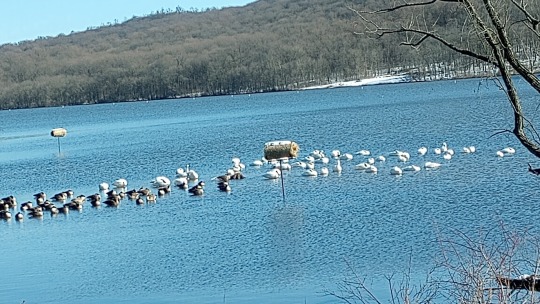
We started off with a drive around the lake, and saw this flock of swans resting near the shore. The smaller birds are the left are Canada geese, so if you're familiar with those, that gives you an idea of how big the swans are! They pretty much just hung out there the whole time I watched; every now and then one would stretch out its neck a bit and get comfy again.
Then I drove to the Willow Point parking lot, which is Snow Goose Migration Central. There were maybe eight or so cars there, in early afternoon on a Wednesday--the best times for Snow Goose viewings are dawn and dusk, and of course the weekends are very busy. They had a whole row of a dozen extra port-a-potties in for the Snow Goose crowds.
From the parking lot, you walk about half a mile to the viewing spot, along this nice paved trail:

The viewing spot has a pavilion and some benches, and--on this day--eight or ten well-bundled-up senior citizens, who have settled in for long-term viewing with their binoculars and tripods, and a rotating cast of other visitors like me, with dogs and strollers and such, who have stopped by to see what all the fuss is about.
The official count this morning, apparently, was 23,000 snow geese (along with 105 tundra swans, and some Canada geese). During the day, the giant flocks break up and smaller groups fly off to look for places to eat, but some stick around. So this is the small, partial flock that was on the water this afternoon:

Here's a group that was off feeding, coming back in to join the main flock:

They approached in in a somewhat-disorganized-but-recognizable version of the classic V formation, but then scattered as they got close, with the returnees filling in seemingly wherever there was a free spot amid the flock.
A little while later, something really neat happened, which was that something spooked them, and the whole flock took off and swirled around for a few moments--I didn't try to get any pictures of it, because I knew they wouldn't turn out, and I wanted to see it. They took off in a body, like you'll see flocks of starlings doing from a field, and there was a sound like a rainstorm on a tin roof, from all of their wings going at once. They came right at us, in the viewing area, and passed overhead, and wheeled over the lake for a turn or two, before settling down again a little to the left of where they started:

I didn't get the necessary landmarks in the picture to make it obvious, but basically now the rightmost edge of the flock is about where the leftmost edge was before they all got up and moved.
A little while later, it looked like they were getting ready to do it again, and I got this picture:
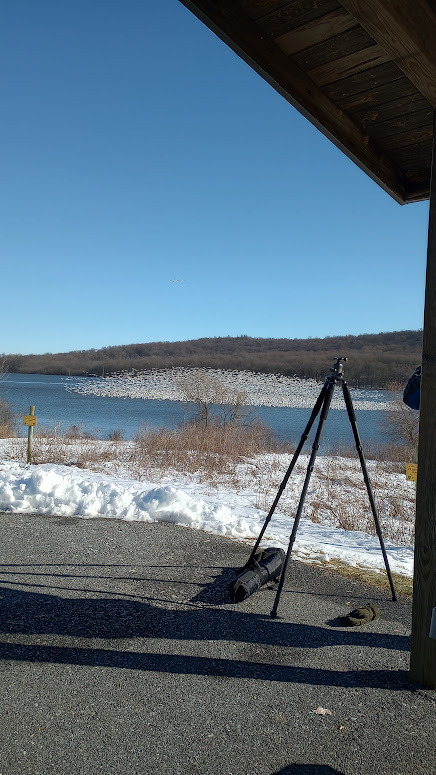
But they only a fraction of the flock took off that time--maybe a quarter?--and when the rest didn't follow suit, they all landed again, shifting the overall flock a little bit back to the right.
This tree across the lake had a Bald Eagle in it:
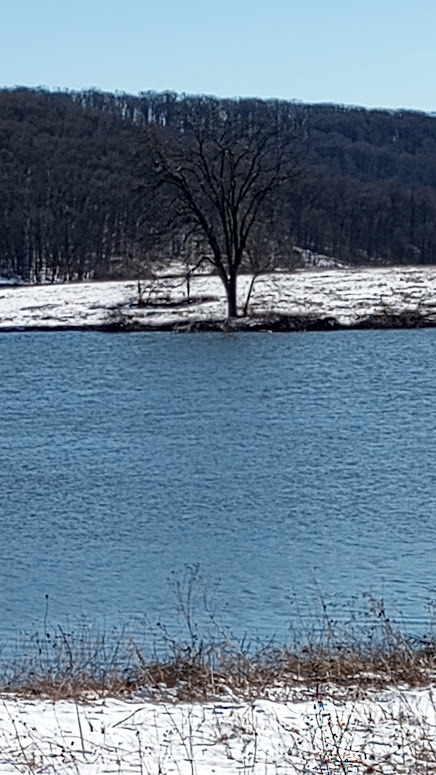
Which the birders suggested was probably what had the geese all riled up. After a bit more watching, I decided I was cold enough--and I wasn't going to see anything to top what I already had--and started back to the car. While I was walking back, I heard the flock take off again, and from that distance, it sounded like a waterfall.
8 notes
·
View notes
Text
The border issue is going to resolve itself pretty soon here.
My prediction:
Mexico is going to experience an industrial and economic boom, over the coming century. It will quickly catch up with the United States and Canada, and if it makes some reforms domestically, perhaps with the US' and Canada's guidance, will become a very prosperous place.
Enough so that there won't be a NEED to illegally migrate northwards, and more Mexican people will simply migrate not because of poverty or desperation, but because they may prefer the US or Canada. In fact, Mexico's standard of living and the worth of their currency may grow to something more close to the US.
And then North America will work on combatting illegal immigration from the rest of South America. Which will involve similar measures to combat mafia, government corruption, extreme poverty and inequality, and better business practices.
Once Mexico has better industry and better transportation to and from its states, it'll have tons of good paying jobs and new places to live that aren't a haphazardly linked federal hell. That means those that come northwards looking for work won't have a reason to venture northwards.
Hilariously, the issue of illegal immigration.. will be solved with capitalism.
2 notes
·
View notes
Text























Photos © Mariam Magsi, 2023
Don’t let mainstream media deceive you. Our protests are in the thousands. The growing wave of rallies, demonstrations, and sit-ins across Canada and the USA is a prime example of why we must be critical consumers of news. Contrary to what some sources may lead you to believe, these gatherings are not limited to “hundreds” or “dozens.” We are out here in the thousands and thousands, and our message is clear: CEASEFIRE NOW!
We are raising our voices against the backdrop of personal violence, societal violence, and intergenerational traumas that have scarred our communities. These traumas are the legacy of occupations, forced migrations, displacements, violence, colonization, and war. We carry the weight of our ancestors who served in militaries and we have endured cycles of violence at home.
We recognize that we have no control over the events that shaped our history. However, we firmly believe that we can shape the now, and this present moment holds the power to create a better tomorrow. As we protest and make our voices heard, we do so with the intention of leaving behind a planet that is a gift, rather than a burden, to our descendants. We envision a future where the scars of the past can heal and where cycles of violence can be broken.
Action Items-: Donate for urgent aid to Gaza-: *Islamic Relief Canada (Zakat accepted) *Palestine Children’s Relief Fund (PCRF) *Medical Aid for Palestine (MAP)
Write to federal and provincial leaders-: *Prime Minister Justin Trudeau [email protected] *Foreign Minister Mèlanie Joly [email protected]
*Toronto Palestine Film Festival has compiled a list of restaurants, shops and businesses we can support at this time: tpff.ca/resources
#Toronto4Palestine#Gaza#FreePalestine#Canada#TorontoLovesPalestine#protest#rally#demonstration#mariammagsi#civil disobedience#raise your voice
8 notes
·
View notes
Text
reading the labour manifesto.
seems ok so far. usual bit of waffle.
(waffle of my own below, which I've stuck under a readmore)
they're gonna recruit more teachers. fantastic! (how? it doesn't say. but how hard can it be?)
free school breakfasts in every primary school is actually great news and i'm very happy about that!*
*I think that's what "free breakfast clubs" means, not just free morning childcare. not that free morning childcare wouldn't be fab, mind you
they're going to end tax loopholes, which might be harder than they make it sound, but it sounds like they have a few plans to make it more difficult. and they are gonna focus on large businesses avoiding tax, so what actually matters.
they're really vague on immigration, which does worry me. they're gonna stop illegal dangerous crossing and not send people to Rwanda, but they're not actually taking a position on whether immigration is good for this country or not.
"securonomics". lol.
i don't really understand economics and it's always hard to judge what it actually means. there's a bit of "yay business is good" for sure, but then also talking about "shaping markets not just serving them" and the downsides of big corporations. they are capping corporation tax at 25%, apparently the lowest of the G7 (Canada, France, Germany, Italy, US, UK and Japan) which seems backwards to me.
national rail is coming back! i was not even born when they got privatised but it will be interesting to see what that looks like. and local bus services are allowed too i think? their transport plan actually looks pretty good to me.
building more houses, which. i mean. i'm not actually sure but i think empty houses is more the issue? but then there is a proper housing crisis at the moment so. some stuff about environmental friendly housing which seems reasonable but i don't know enough to make a full judgement on.
growth growth growth. i'm not a fan, but then the 2nd biggest political party in the uk is hardly going to say "capitalism is a mistake and we need to get used to a lower standard of living in the grand scheme of things in order to be able to live sustainably" so. i'll take it on the chin.
oh! they do have an opinion on migration. it's bad. and "must be properly controlled and managed". and you were doing so well until now.
reforming jobcentre and work capability assessments, which are definitely broken at the moment. so hopefully any changes to that will be an improvement.
more workers rights! yay!
i'm gonna read the rest of it tomorrow. i may also ramble my thoughts on here, more just so that i don't get bored reading through it than anything.
2 notes
·
View notes